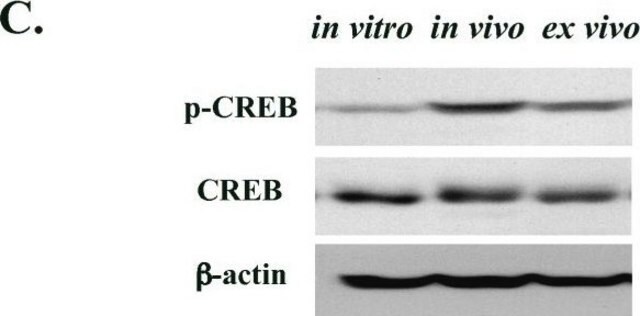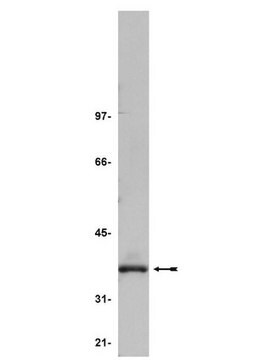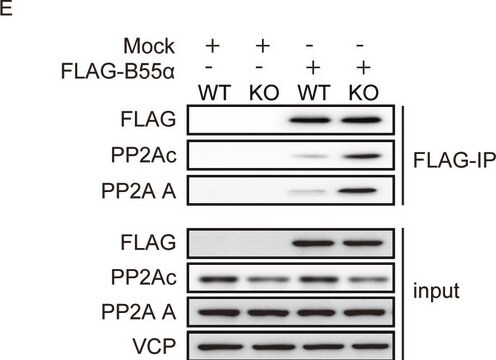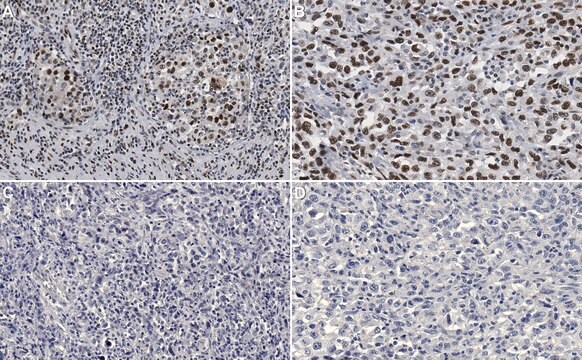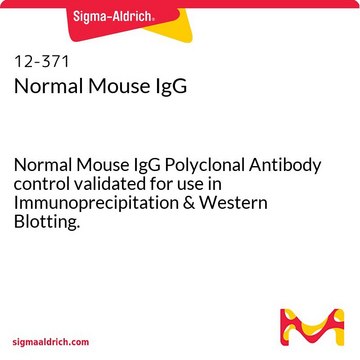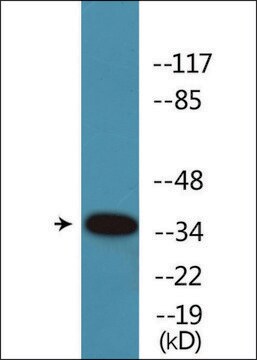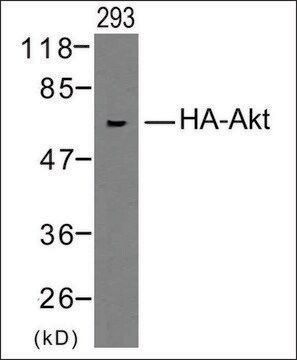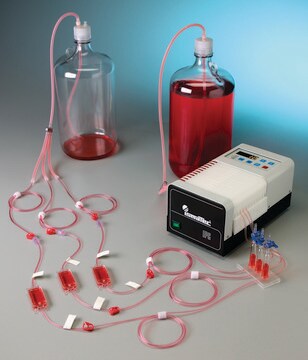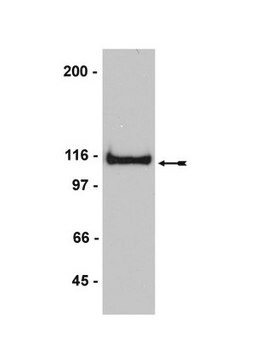05-807
Anti-phospho-CREB (Ser133) Antibody, clone 634-2
clone 634-2, Upstate®, from mouse
Sinônimo(s):
active transcription factor CREB, cAMP responsive element binding protein 1, cAMP-response element-binding protein-1, transactivator protein
About This Item
Produtos recomendados
fonte biológica
mouse
Nível de qualidade
forma do anticorpo
purified antibody
tipo de produto de anticorpo
primary antibodies
clone
634-2, monoclonal
reatividade de espécies
rat, mouse
fabricante/nome comercial
Upstate®
técnica(s)
immunocytochemistry: suitable
immunofluorescence: suitable
western blot: suitable
Isotipo
IgG1κ
nº de adesão NCBI
nº de adesão UniProt
Condições de expedição
dry ice
modificação pós-traducional do alvo
phosphorylation (pSer133)
Informações sobre genes
human ... CREB1(1385)
Descrição geral
Especificidade
Imunogênio
Aplicação
1:500 to 1:32,000 dilutions of this lot detected CREB peptide containing phosphoserine 133. The antibody did NOT recognize the nonphosphorylated peptide of the same sequence
Immunofluorescence / Immunocytochemistry:
This antibody has been reported by an independent laboratory to detect phospho-CREB (Ser133) using immunofluorescence.
Epigenetics & Nuclear Function
Transcription Factors
Qualidade
Western Blot Analysis:
A 1:1,000 to 1:4,000 dilution of this lot detected phospho-CREB (Ser 133) in RIPA lysates from forskolin treated rat PC-12 and mouse 3T3/A31 cells (Figure A).
Descrição-alvo
forma física
Armazenamento e estabilidade
Nota de análise
Human breast carcinoma, forskolin- and FGF-treated SK-N-MC cell extracts.
Outras notas
Informações legais
Exoneração de responsabilidade
Não está encontrando o produto certo?
Experimente o nosso Ferramenta de seleção de produtos.
recomendado
Código de classe de armazenamento
10 - Combustible liquids
Classe de risco de água (WGK)
WGK 1
Certificados de análise (COA)
Busque Certificados de análise (COA) digitando o Número do Lote do produto. Os números de lote e remessa podem ser encontrados no rótulo de um produto após a palavra “Lot” ou “Batch”.
Já possui este produto?
Encontre a documentação dos produtos que você adquiriu recentemente na biblioteca de documentos.
Nossa equipe de cientistas tem experiência em todas as áreas de pesquisa, incluindo Life Sciences, ciência de materiais, síntese química, cromatografia, química analítica e muitas outras.
Entre em contato com a assistência técnica